2025 OIF 448G Workshop
Watch the videos below captured at the workshop below. Also, check out our recent reports by grabbing a bundle of our latest 2024-2025 reports (SASE, Carrier and Campus NaaS, AI in Networking) plus the LATEST edition of our Data Center Networking for AI and Cloud report (likely of interest to you if you were at the OIF workshop). The reports are UNLOCKED — no personal information needed to download.
Reader feedback on NGI reports: “Well-researched”, “Made me think”, “Worth the read”. Download our report bundle and send us your feedback!
Highlights from OIF 448G Workshop
Views expressed are those of the presenting individuals and companies and may not necessarily represent views of Converge! Network Digest or AvidThink.

Why 400G Systems Demand a New Era of Industry-Wide Collaboration
Cathy Liu, SerDes Architect at OIF, explains how the shift to 400G systems demands unprecedented collaboration between equipment vendors, component makers, and chip designers to overcome bandwidth constraints. She describes how OIF is coordinating industry-wide efforts to evaluate circuit designs and modulation approaches that will enable successful 400G deployment despite power and reliability hurdles.

Breaking 100GHz Barriers for Higher Bandwidth
Sam Kocsis, Director of Standards and Technology at OIF, leads discussions at the organization’s 448G AI workshop to address next-generation deployment challenges through industry collaboration. The workshop examines connector interfaces and system architectures, focusing on increasing data rates through module density and signal speed improvements, while developing new standards for enhanced bandwidth capabilities.

448G Building the Future of High-Speed Connectivity Standards
Michael Klempa, Interoperability Working Group Chair at OIF, leads discussions at the 448G AI workshop to establish industry standards for high-speed connectivity. The initiative brings together multiple standards organizations and industry partners to develop a comprehensive framework document covering various 448G applications, from long-reach to chip-to-chip connections, while incorporating feedback from SerDes vendors, connector manufacturers, and end users.
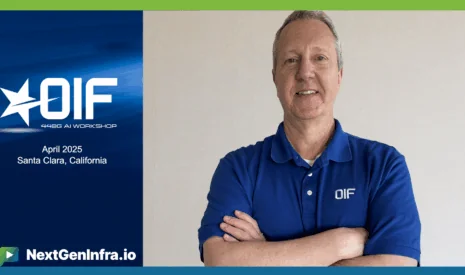
Coherent Optics: From 400G to 1.6T
Tom Issenhuth, Co-Chair of the MA&E Committee at OIF, outlines the progression of coherent optics standards from 400G ZR to 800G ZR and upcoming 1.6T interfaces. The increasing demands of AI/ML workloads and higher data rates are making coherent optics essential for both inter- and intra-data center connectivity, especially when accounting for optical switching requirements.
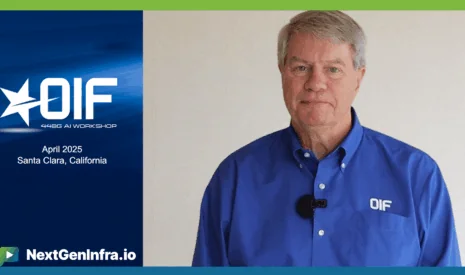
Shaping Next-Gen AI Infrastructure & Network Solutions
Nathan Tracy, President of OIF, leads a comprehensive 400 gigabit workshop focused on AI compute infrastructure requirements, bringing together industry experts, hyperscalers, and analysts. The workshop addresses six key areas including electrical data rates, coherent technology, and network capacity management, with Tracy emphasizing recent progress in 448 gigabit solutions while tackling technical hurdles in achieving higher data rates.

Energy-Efficient Solutions for AI Infrastructure
Jeff Hutchins, Director of the CTO Office at OIF, leads the organization’s Energy Efficient Interfaces group, which builds upon their 2020 co-packaging work with hyperscalers. The group advances multiple energy-saving technologies, including transmit linear receiver solutions and high-density connectors, while addressing critical power consumption and reliability challenges in AI training environments.

448G Will Be The First AI-Native Network Standard
Alan Weckel, Founder and Technology Analyst at 650 Group, explains how the new 448 speed standard at OAF marks the first speed designed specifically for the AI era, addressing hyperscalers’ next-generation chip requirements. His analysis shows how this advancement has expanded networking from a $10-15 billion market to a $50-100 billion opportunity in data centers, with server markets potentially reaching $300-500 billion.

448G Is Inevitable—But Far from Easy
Scott Wilkinson, Lead Analyst, Networking Components at Cignal AI, examines the development of 448G PAM4 technology and its implications for networking speed transitions from 50G to 400G and beyond. His analysis combines technical expertise with market insights to evaluate how AI applications are accelerating the need for advanced data center technologies, including coherent light and PAM4 solutions.
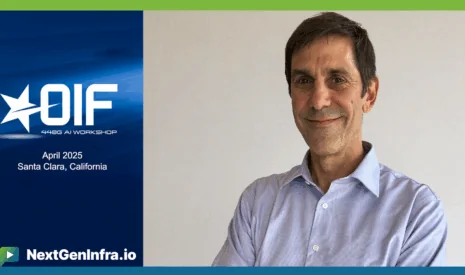
Google's AI Challenge: Scaling Networks for 100K+ TPU Clusters
Tad Hofmeister, Optical Hardware Engineer for Machine Learning Systems at Google, outlines the bandwidth requirements and technical hurdles for the seventh-generation TPU Ironwood and future TPU generations, highlighting the need for 448G signaling by 2028. He examines the challenges of achieving higher data rates through PAM4, PAM6 and PAM8 modulations to support large language model training that requires over 100,000 TPUs in a single cluster.

Rethinking Connectors with 2D Interfaces for the 448G Era
Matt Traverso, Distinguished Engineer at Marvell, leads research on high-density 2D connector designs to enhance 448G signaling capabilities for AI and large-scale computing. His work prioritizes signal integrity optimization and thermal efficiency to create lossless electrical channels for next-generation data centers.
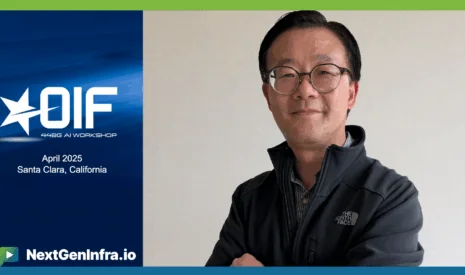
Meta: Scaling Bandwidth from 228 to 448G
Xu Wang, Hardware Engineer at Meta, examines the growing network bandwidth demands for AI systems, focusing on scaling from 228 to 448 Gbits per second while managing power and space constraints. He outlines technical hurdles in modulation formats and interconnect components, emphasizing the need for industry alignment to support next-generation AI infrastructure development.

448G Connectivity: Key Requirements & Solutions
Ashwin Gumaste, Principal AI Systems Architect at Microsoft, examines the industry’s shift from 224G to 448G connectivity, focusing on power budget constraints and retimer solution challenges. He explores technical requirements including 40 dB reach specifications, power optimization targets, and cost considerations while discussing both copper and optical implementation approaches.

Gearbox-Free Electrical-Optical Co-Design for 448G Era
Peter Winzer, Founder & CTO of Nubis Communications, emphasizes the importance of electrical-to-optical integration at the OIF 448G workshop, focusing on solutions that operate without power-consuming gearboxes and can be directly driven from SerDes.

TE Connectivity Advances Channel Modeling for 448G
Nathan Tracy, System Architect at TE Connectivity, led discussions at OIF’s 448G networking workshop for AI applications, focusing on channel models and analysis for next-generation interconnects. TE Connectivity is working with ecosystem partners to evaluate channel performance within equipment size limitations while meeting increasing data transmission requirements.

448 Signaling Sets New Path for Ethernet's Future
John D’Ambrosia, Chair of the IEEE P802.3dj Task Force at IEEE, leads industry collaboration on 448 signaling development at the OAF workshop, representing early planning efforts for future Ethernet standards. His experience guiding three previous Ethernet speed transitions positions him to address the technical challenges of advancing from 200 to 400 gigabit implementations while the current standard is still being finalized.
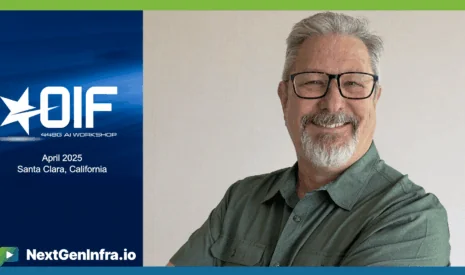
GPU Networking Evolution: From 200G to 400G
Kurtis Bowman, Chairman of UALink Consortium, outlines the industry’s quick advancement from 200G to 400G networking while highlighting the organization’s new specification release. The standardization enables multi-vendor GPU and switch compatibility through high-bandwidth, low-latency connections that allow multiple GPUs to operate as a unified system.